©2025 MKLab.
Some Rights Reserved.
Built with Hugo & hyde-hyde.
Logo made by Freepik from www.flaticon.com
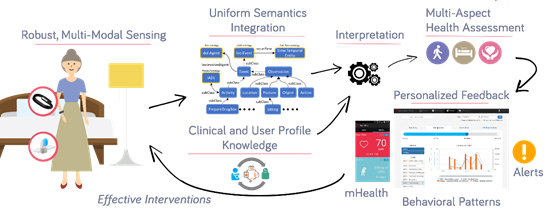
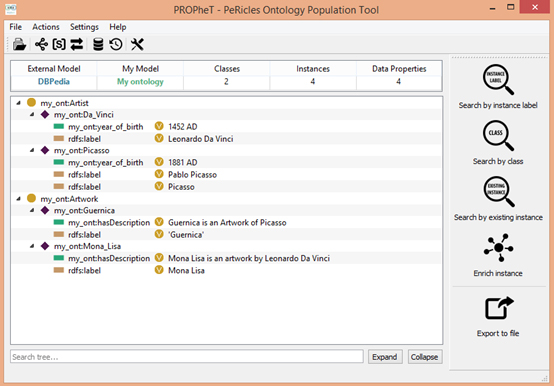
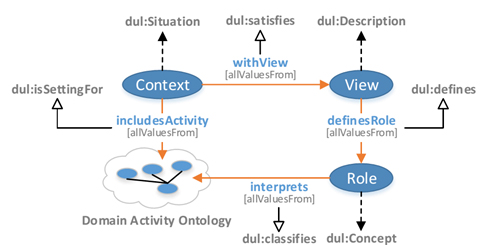
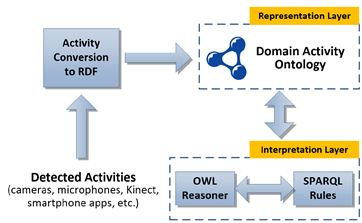
The Semantic Web technologies provide the means and tools to unanimously represent the meaning of Web entities and their relations to one another, in a machine-interpretable manner. While modelling and managing knowledge for web entities has long ago been established, the Semantic Web technologies also show great potential in other domains, in both online and offline worlds.
Two such prominent applications have to do with representing and managing context, enabling two different flavours of context-aware computing. Context-awareness in pervasive computing translates to situation awareness and enables intelligent decision making in smart spaces, in real- or close to real-time. Meanwhile, context-of-use alters the very meaning of persistent entities, such as those met in digital preservation and cultural heritage, which stimulates further research questions in topics such as ontology evolution and concept drift.
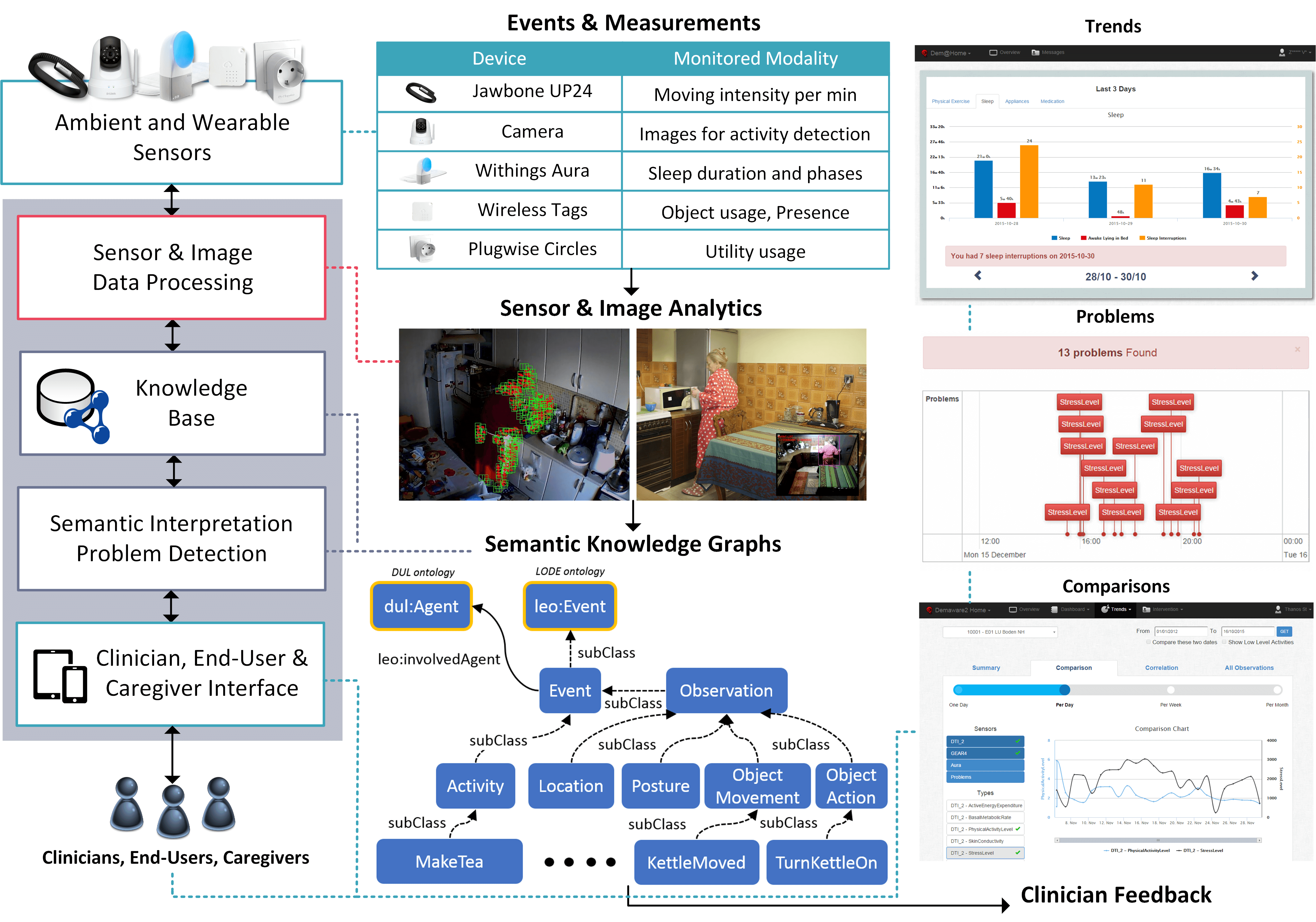
Pervasive and mobile technologies are one of the leading computing paradigms of the future. Transitioning from the world of personal computing, powerful, compact devices are distributed across the user’s environment, enabling the contextualized enrichment of business processes with the ability to sense, process and combine data and forming smart environments of Ambient Intelligence (AmI). This interconnection of devices, machines and “things” enables the dynamic generation, analysis and communication of multiple data types so that the operational efficiency and effectiveness of existing business processes are increased. The large societal and personal impact of pervasive, mobile and interconnected entities in the web, is already evident in a number of application domains, some of which are eHealth and Ambient Assisted Living (AAL), security, energy and the environment, agriculture and the retail industry.
In this framework the Semantic Web technologies are employed to deliver solutions for a multitude of challenges, relevant not only to the heterogeneity of communication protocols and interfaces, but also to the diverse context-aware information exchange, representation and processing capabilities. Our solutions address a variety of such challenges and application domains using semantic knowledge representation and management:

Knowledge representation techniques are currently mature enough to capture the semantic meaning of a certain instance of an entity. However, in an era of constant change, investigating, measuring and managing semantic change across time is yet to be explored, especially in the domain of digital and cultural objects of special meaning, towards their timeless preservation. Semantic Web technologies are employed to address the challenge of ensuring that digital content remains accessible in an environment that is subject to continual change. This can encompass not only technological change, but also changes in semantics, academic or professional practice, or society itself, which can affect the attitudes and interests of the various stakeholders that interact with the content.
A “preservation by design” approach involves modelling, capturing and maintaining detailed and complex information about digital content, the environment in which it exists, and the processes and policies to which it is subject. Additionally, a variety of methods and tools complement the approach, namely modelling context-of-use, providing ontology population with Linked Data and metrics for semantic concept drift as a measure for ontology evolution.
Meditskos, G., Kontopoulos, E., & Kompatsiaris, I. (2014, October). Knowledge-driven Activity Recognition and Segmentation Using Context Connections. In International Semantic Web Conference (pp. 260-275). Springer International Publishing.
T. G. Stavropoulos, G. Meditskos, E. Kontopoulos and I. Kompatsiaris, Multi-sensing Monitoring and Knowledge-driven Analysis for Dementia Assessment, International Journal of E-Health and Medical Communications (IJEHMC), 6(4), 77-92, 2015.
Mitzias, P., Riga, M., Waddington, S., Kontopoulos, E., Meditskos, G., Laurenson, P., & Kompatsiaris, I. (2015). An Ontology Design Pattern for Digital Video. In Proc. of the 6th Workshop on Ontology and Semantic Web Patterns (WOP 2015) co-located with the 14th Int. Semantic Web Conf.(ISWC 2015) (Vol. 1461).
G. Meditskos, S. Dasiopoulou, I. Kompatsiaris, “MetaQ: A Knowledge-Driven Framework for Context-Aware Activity Recognition Combining SPARQL and OWL 2 Activity Patterns”, Pervasive and Mobile Computing, 2015, https://doi.org/10.1016/j.pmcj.2015.01.007
Kontopoulos, E., Riga, M., Mitzias, P., Andreadis, S., Stavropoulos, T. G., Lagos, N, Vion-Dury, J., Meditskos, G., Falcão, P., Laurenson, P. & Kompatsiaris, I. (2016). Ontology-based Representation of Context of Use in Digital Preservation. Proc 1st Workshop on Humanities in the Semantic Web (WHiSe) at the Extended Semantic Web Conference (ESWC2016).
T.G. Stavropoulos, G. Meditskos and I. Kompatsiaris, “DemaWare2: Integrating Sensors, Multimedia and Semantic Analysis for the Ambient Care of Dementia”, Journal of Pervasive and Mobile Computing, Elsevier, 2016, Volume 34, 2017, Pages 126-145, ISSN 1574-1192, doi: 10.1016/j.pmcj.2016.06.006.